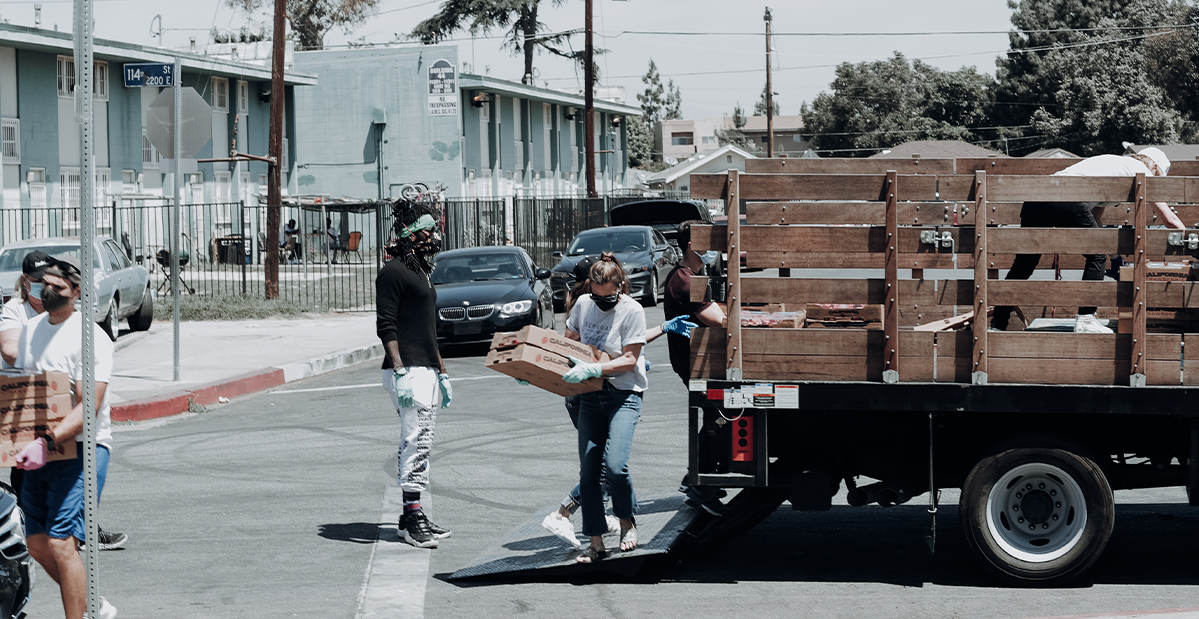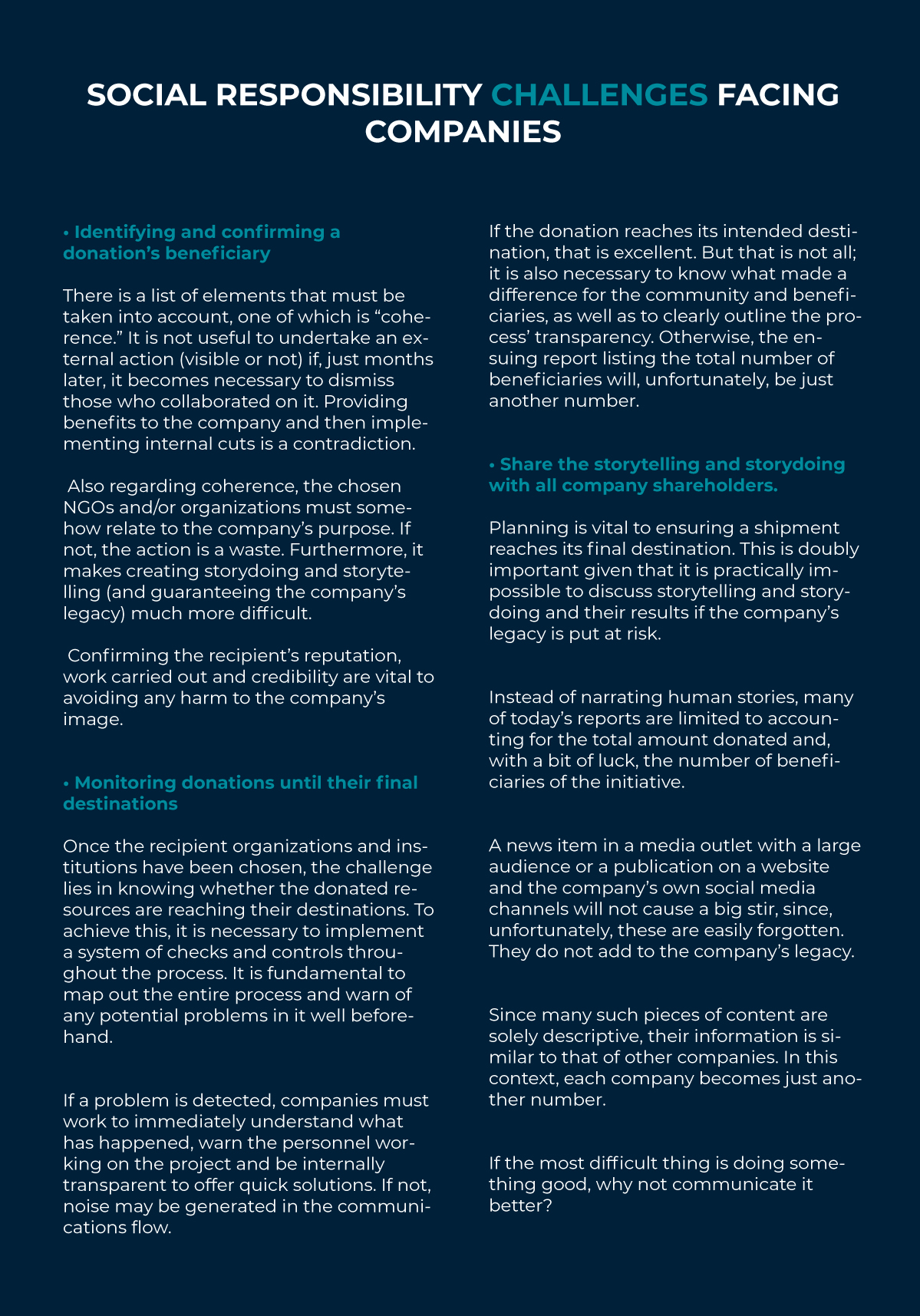
-
CountriesGlobal
In this time, which has seemed to go on forever, it is no exaggeration to say that a revolution has taken place in our lifestyles. We cannot yet pinpoint which changes will endure and which will fall away; it is still too early to do that, despite the pandemic speeding up and creating certain trends.
However, it is possible to analyze the global phenomenon that has taken society by surprise. One positive aspect we can identify, remembering that “we fell asleep in one reality and woke up in a very different one,” is the fast and immediate mobilization of companies and individuals to help combat COVID-19.
In the United States, philanthropy forms an integral part of the culture. This is especially true regarding wealthy individuals – we need not look further than emblematic names as Warren Buffett and Bill Gates, to give just two examples. The situation is different in Europe, mainly due to the fact that Welfare States have predominated for many years.
The panorama is also different in Latin America. Since many countries in the region are still developing themselves, companies, working together with governments, frequently play a key role in contributing to important areas such as healthcare, education and housing.
In Brazil in particular, a major movement – one different from philanthropy – began in the 1990s’. It was based on companies’ social responsibility and its link to their reputations. This movement initially gained importance in the media through news items and special reports, but over time, it ceased to be news. CSR became pervasive, forming part of companies’ standard, expected activities and ceasing to be a differentiating factor. Instead, it became unusual for companies not to have some kind of social responsibility program. After that, not acting in a socially responsible manner directly or indirectly impacted public perceptions of companies.
Regardless of the culture or continent in question, COVID-19 donations included basic supplies, products, equipment and large sums of money, as well as many manhours of volunteer work. Take Brazil for example. There, companies all acted in a similar fashion. The quarantine began in mid-March, and the mobilization of resources started to show results by April. Civil society organized itself, acting together to boost the process.
“After that, not acting in a socially responsible manner directly or indirectly impacted public perceptions of companies”

The Brazilian Association of Resource Collectors (ABCR), which worked to ensure the country, like many others, quantified such donations, set up the COVID-19 Donation Monitor. This helped mobilize additional companies and give visibility to those that had already acted. Between May and July, Brazilian companies collected close to $1.2 billion.
At the same time, main Brazilian television broadcaster Rede Globo, which had never before divulged the names of companies on the grounds of journalistic policy, created a special show called Solidariedade/SA. Airing on the news program with the largest audience, it highlighted the details of various business initiatives each day. This spurred yet more companies to take part in the campaign, thereby further driving their visibility.
In parallel to this supportive movement, however, it was not unusual to hear news discussing the lack of protective equipment available in the healthcare sector, both on the public and private levels. There were also stories about problems in hospitals and public powers’ diversion of funds from those sectors where most resources should have been allocated.
This scenario is complicated not only by the pandemic, but also by uncertainties surrounding each donation’s destination. Certain pending questions also exist, such as how to guarantee “storydoing” (ensuring a product or brand plays a key role in a client’s life) and “storytelling” (generating an emotional connection between a company or brand and its clients through a narrative), or how to determine whether a planned action is properly linked to the target purpose. It goes beyond this as well – in the midst of so much information, it is necessary to know how to build or maintain a company’s legacy through its activities.
“This scenario is complicated not only by the pandemic, certain pending questions also exist, such as how to guarantee “storydoing”, “storytelling”, or how to determine whether a planned action is properly linked to the target purpose”

To achieve this, companies face at least three challenges:
1. Identifying and confirming a donation’s beneficiary
There is a list of elements that must be taken into account, one of which is “coherence.” It is not useful to undertake an external action (visible or not) if, just months later, it becomes necessary to dismiss those who collaborated on it. Providing benefits to the company and then implementing internal cuts is a contradiction.
Also regarding coherence, the chosen NGOs and/or organizations must somehow relate to the company’s purpose. If not, the action is a waste. Furthermore, it makes creating storydoing and storytelling (and guaranteeing the company’s legacy) much more difficult.
Confirming the recipient’s reputation, work carried out and credibility are vital to avoiding any harm to the company’s image.
Integration and speed
Today’s situation demands new working methods and close collaboration between all areas involved (Marketing, Communications, Social Responsibility and Compliance) to guarantee speed and high levels of performance for each activity. Furthermore, it is necessary to provide support for even more complex initiatives, such as equipment imports, and their associated problems in order to ensure rapid resolutions.
“Confirming the recipient’s reputation, work carried out and credibility are vital to avoiding any harm to the company’s image”

2. Monitoring donations until their final destinations
Once the recipient organizations and institutions have been chosen, the challenge lies in knowing whether the donated resources are reaching their destinations. To achieve this, it is necessary to implement a system of checks and controls throughout the process. It is fundamental to map out the entire process and warn of any potential problems in it well beforehand.
If a problem is detected, companies must work to immediately understand what has happened, warn the personnel working on the project and be internally transparent to offer quick solutions. If not, noise may be generated in the communications flow.
If the donation reaches its intended destination, that is excellent. But that is not all; it is also necessary to know what made a difference for the community and beneficiaries, as well as to clearly outline the process’ transparency. Otherwise, the ensuing report listing the total number of beneficiaries will, unfortunately, be just another number.
3. Share the storytelling and storydoing with all company shareholders.
Planning is vital to ensuring a shipment reaches its final destination. This is doubly important given that it is practically impossible to discuss storytelling and storydoing and their results if the company’s legacy is put at risk.
Instead of narrating human stories, many of today’s reports are limited to accounting for the total amount donated and, with a bit of luck, the number of beneficiaries of the initiative.
A news item in a media outlet with a large audience or a publication on a website and the company’s own social media channels will not cause a big stir, since, unfortunately, these are easily forgotten. They do not add to the company’s legacy.
Since many such pieces of content are solely descriptive, their information is similar to that of other companies. In this context, each company becomes just another number.
If the most difficult thing is doing something good, why not communicate it better?
Opportunity
The time for companies to assume a responsible role in society has not only arrived, but has become more favorable than ever before. Now, there are several factors supporting these efforts.
In Brazil, for example, a significant increase took place. This is clear when comparing the $1.2 billion donated by the end of June 2020 with the $640 million accounted for by the Group of Institutes, Foundations and Companies (GIFE) census in the whole of 2018 (the most recent figure). Another piece of good news is the 7 percent increase from August 2018 to August 2019 in the Brazilian public’s positive perceptions of NGOs’ work. These figures are from the Brazil Giving Report 2020, which is responsible for determining the country’s donation culture.
This report is part of an international CAF Global Alliance series that gathers data from Australia, Brazil, Bulgaria, Canada, India, South Africa, the United Kingdom and the United States. In Brazil, an online survey was carried out on 1,000 people in line with different demographic profiles. In the other countries, the Giving Report is part of the national culture, as its use is more consolidated.
Against this backdrop, it is clear there is still room to work on the legacy and reputation of companies as a whole to better communicate these important topics.
“If the most difficult thing is doing something good, why not communicate it better?”

Authors
Adélia Chagas



